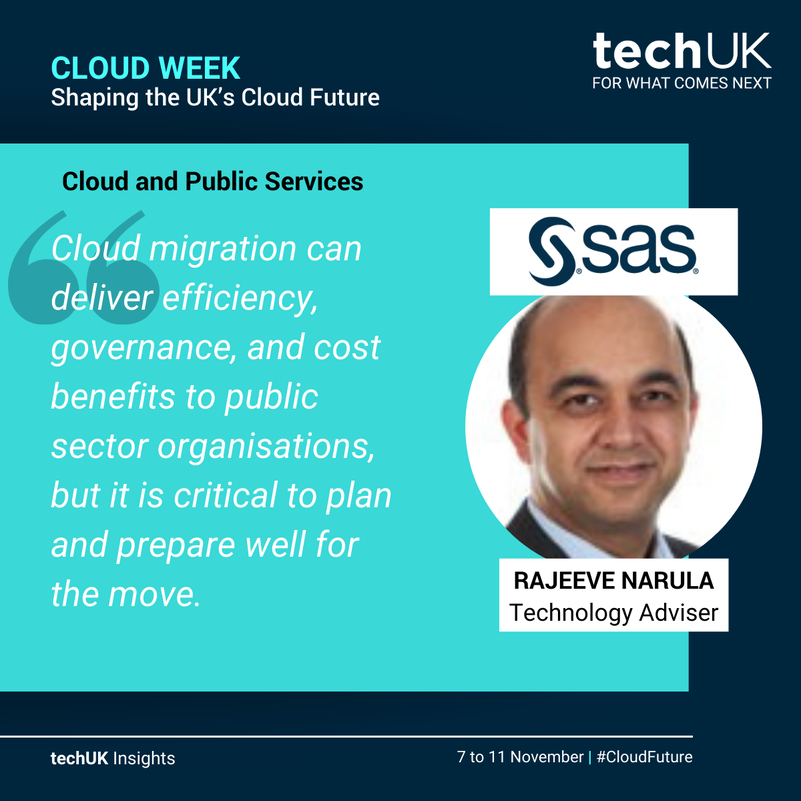Can moving analytics to the cloud really be that straight forward for the UK government? (Guest blog from SAS)

Author: Rajeeve Narula, Technology Adviser, SAS
Cloud adoption is perhaps one of the most common themes I hear in my customer interactions these days. There is a clear mandate within the UK government’s Cloud First policy for UK government and the wider public sector organisations to fully evaluate potential for the public cloud rather than a community, hybrid, or private deployment models as this is where they can maximise value from the public purse while building the best digital services for citizens.
Not surprisingly, leaders of digital and commercial functions within the public sector are keen to migrate their analytics workload to the public cloud. However, this does not necessarily result in a quick implementation of their strategy because such projects can often be complex, and the organisations face several roadblocks during their journey to the cloud. The complexity stems from several issues including governance, security, commercial, technical, and organisational culture etc.
While there is guidance available for public sector organisations to manage their spending in the cloud, I have seen a few common topics emerging from my recent customer interactions. These topics relate to the long-term success of cloud migration projects and I believe must be included at the outset of planning their cloud journey.
Data migration: With increasing number of analytics applications adopting cloud-native architecture, rapid and scalable cloud deployment of such applications has become the norm. However, the same cannot be said about the data to be processed by these applications. Experience suggests that the data often remains locked in the legacy storage systems and migrating it to the cloud brings several challenges – varying from organisation’s cultural challenges to regulatory compliance. Storing data close to the analytics engine will have a significant impact on performance and hence this should be factored in as part of the organisation’s cloud strategy planning. Public clouds offer a variety of cost-effective storage options and the analytical applications must be able to leverage these options effectively.
Refactoring: Migrating an exact copy of an existing application to the cloud (aka Lift & Shift) may be a simple and quick approach but there are good chances that the legacy version of the application was developed when the cloud technology was not as evolved as it is today. Given the significant potential benefits from cloud through features such as scalability and high availability, options should be evaluated to refactor the legacy applications where possible, to ensure that the investment in cloud remains future proof.
End-user experience: While commercial and technical considerations remain at the forefront of every cloud migration strategy, one aspect which sometimes gets overlooked is the end-user experience. For example, accessing the remote application from a web-browser interface or integrating the analytics application with other business applications – these may appear insignificant at start, but they all add up to define the end-user experience. It is crucial to assess the impact of migration on user journeys and ensure that the organisation is ready for the change.
Cloud technology is versatile and offers variety of options to achieve same outcomes in different ways. Cloud migration projects are planned to bring efficiency, governance, and cost benefits to the organisations, and hence it is critical to plan and prepare well for the move. Considerations listed above can make the difference between a successful migration and an unsuccessful one.
To learn more about how SAS is working with the UK government visit www.sas.com/uk/gov
Transitioning your solutions from on premise to a multi cloud platform
#CloudFuture Guest blog from TCS
Cloud Week 2022
We bring you news, views and insights from the technology sector on what cloud computing can enable in the UK





